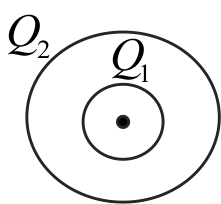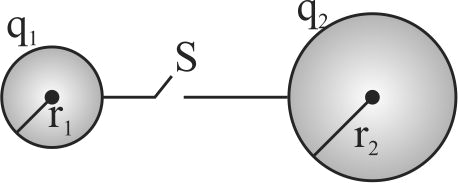359418
The electrostatic potential on the surface of a charged conducting sphere is 50
Which of the following is a correct statement?
359419
Assertion :
Two concentric conducting spherical shells are charged. The charge on the outer shell is varied keeping the charge on inner shell constant, as a result the electric potential difference between the two shells does not change.
Reason :
In the situation of assertion, the electric field in the region between both the shells depends only on the charge existing on the inner shell.
359418
The electrostatic potential on the surface of a charged conducting sphere is 50
Which of the following is a correct statement?
359419
Assertion :
Two concentric conducting spherical shells are charged. The charge on the outer shell is varied keeping the charge on inner shell constant, as a result the electric potential difference between the two shells does not change.
Reason :
In the situation of assertion, the electric field in the region between both the shells depends only on the charge existing on the inner shell.
359418
The electrostatic potential on the surface of a charged conducting sphere is 50
Which of the following is a correct statement?
359419
Assertion :
Two concentric conducting spherical shells are charged. The charge on the outer shell is varied keeping the charge on inner shell constant, as a result the electric potential difference between the two shells does not change.
Reason :
In the situation of assertion, the electric field in the region between both the shells depends only on the charge existing on the inner shell.
359418
The electrostatic potential on the surface of a charged conducting sphere is 50
Which of the following is a correct statement?
359419
Assertion :
Two concentric conducting spherical shells are charged. The charge on the outer shell is varied keeping the charge on inner shell constant, as a result the electric potential difference between the two shells does not change.
Reason :
In the situation of assertion, the electric field in the region between both the shells depends only on the charge existing on the inner shell.



